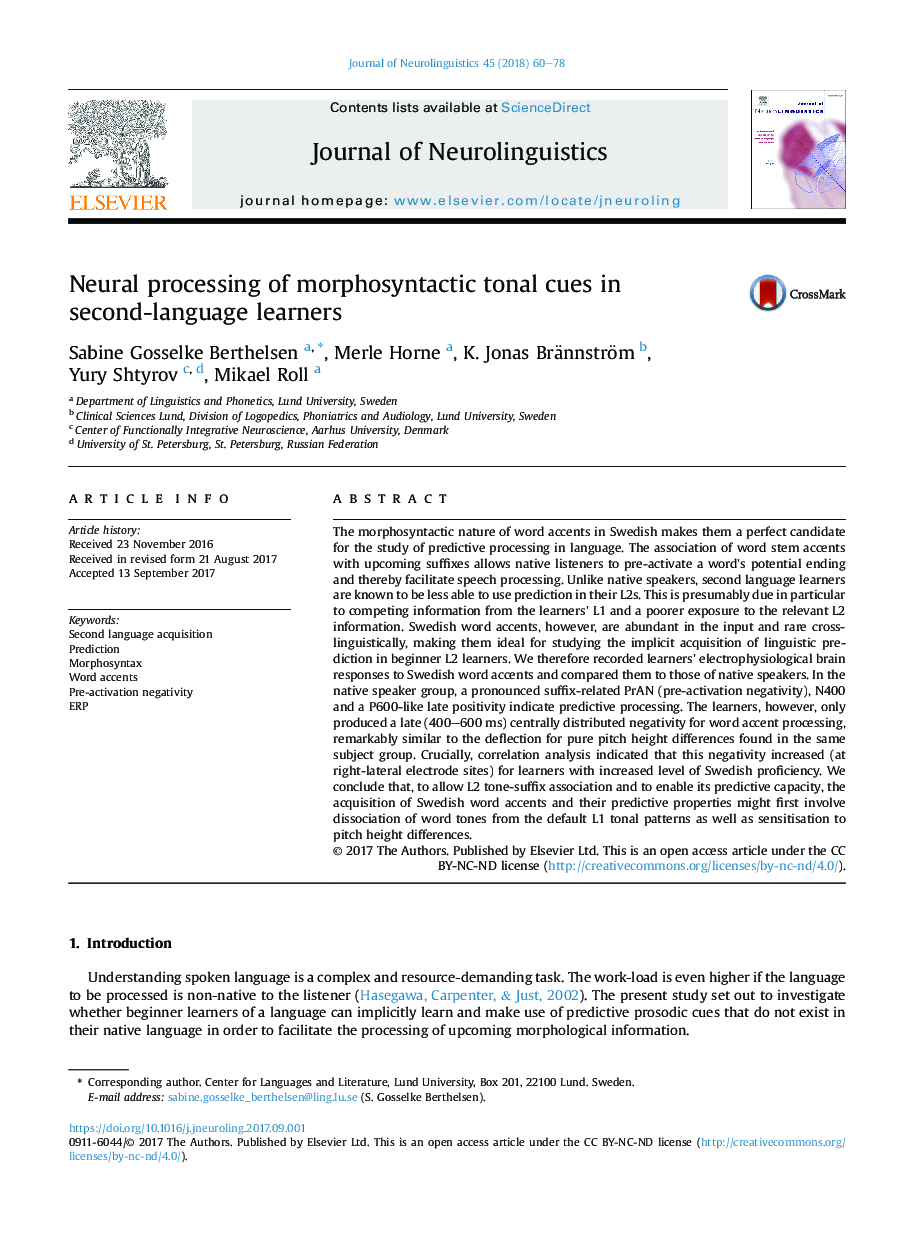| Article ID | Journal | Published Year | Pages | File Type |
|---|---|---|---|---|
| 5039193 | Journal of Neurolinguistics | 2018 | 19 Pages |
â¢Stages for word accent learning: pitch dissociation, sensitisation, re-association.â¢Non-linguistic pitch-height effect for word accents in beginner L2s: Dissociation.â¢Increasing ERP response to pitch differences in beginners learners: Sensitisation.
The morphosyntactic nature of word accents in Swedish makes them a perfect candidate for the study of predictive processing in language. The association of word stem accents with upcoming suffixes allows native listeners to pre-activate a word's potential ending and thereby facilitate speech processing. Unlike native speakers, second language learners are known to be less able to use prediction in their L2s. This is presumably due in particular to competing information from the learners' L1 and a poorer exposure to the relevant L2 information. Swedish word accents, however, are abundant in the input and rare cross-linguistically, making them ideal for studying the implicit acquisition of linguistic prediction in beginner L2 learners. We therefore recorded learners' electrophysiological brain responses to Swedish word accents and compared them to those of native speakers. In the native speaker group, a pronounced suffix-related PrAN (pre-activation negativity), N400 and a P600-like late positivity indicate predictive processing. The learners, however, only produced a late (400-600 ms) centrally distributed negativity for word accent processing, remarkably similar to the deflection for pure pitch height differences found in the same subject group. Crucially, correlation analysis indicated that this negativity increased (at right-lateral electrode sites) for learners with increased level of Swedish proficiency. We conclude that, to allow L2 tone-suffix association and to enable its predictive capacity, the acquisition of Swedish word accents and their predictive properties might first involve dissociation of word tones from the default L1 tonal patterns as well as sensitisation to pitch height differences.
